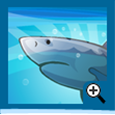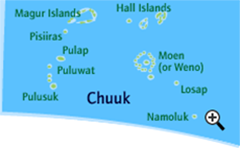The Canoe Is the People
Indigenous Navigation in the Pacific
Sea Life
Sea life – like fish, birds, and seaweed – is more common near land and can help to guide wayfinders. For example, lines of seaweed can reach up to 200 km east of Aotearoa GLOSSARY Aotearoa - New Zealand .
Homing birds are especially useful for finding land. These are birds that feed at sea during the day and return to land in the evening – for example, boobies, terns, and noddies. They fly in a direct line of up to 30 km to and from land. A large group of birds shows that land is 15 to 30 km away. To find out the direction of land, the wayfinder waits until the evening when the birds fly home. Boobies may even circle a vaka before going home.
It is possible that migrating GLOSSARY migrating - travelling animals gave early wayfinders clues about where other islands were – for example, the kuaka (godwit) and the koekoea (long-tailed cuckoo), which fly across the Pacific and arrive in Aotearoa GLOSSARY Aotearoa - New Zealand in spring each year. Whales also migrate to and from the Pacific, often using the same route from year to year.
How Pisiiras Was Found (Chuuk, Micronesia)
This story about land finding involves a shark and a bird. Five brothers lived on Moen* Island. Their father told them about a lost island near Moen. When he died, the brothers sailed to find it. In four days, they found nothing. Only the youngest brother still believed in his father’s story and kept looking. Soon, he saw a huge shark. It was guiding his waa. The boy thought it must be the ghost of his father. The shark swam with the waa until they reached the area of the lost island.
The boy dived down and found the island! The next day, he took his brothers there. The oldest tied a rope to it and pulled. The other brothers tried too, but they all failed. When the youngest tried, it came up! At that moment, a black bird flew by and told them to call the island Pisiiras.
Moen is now spelled Weno.












